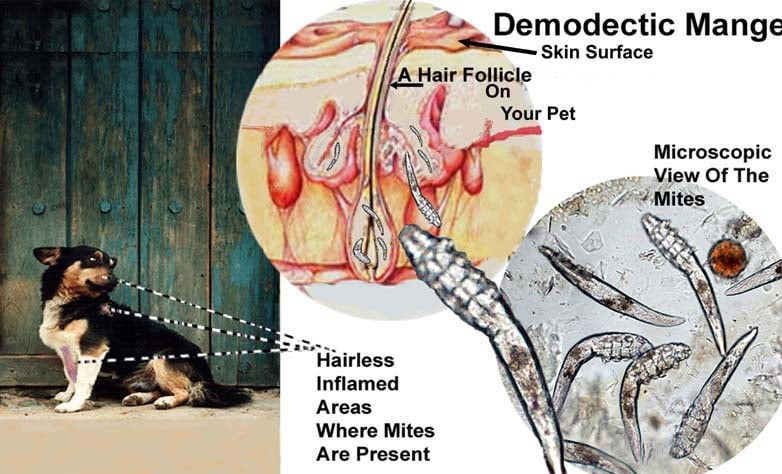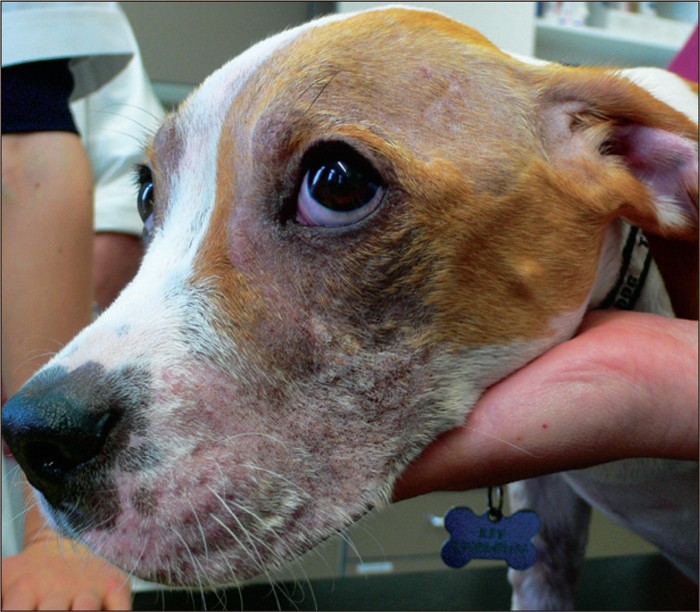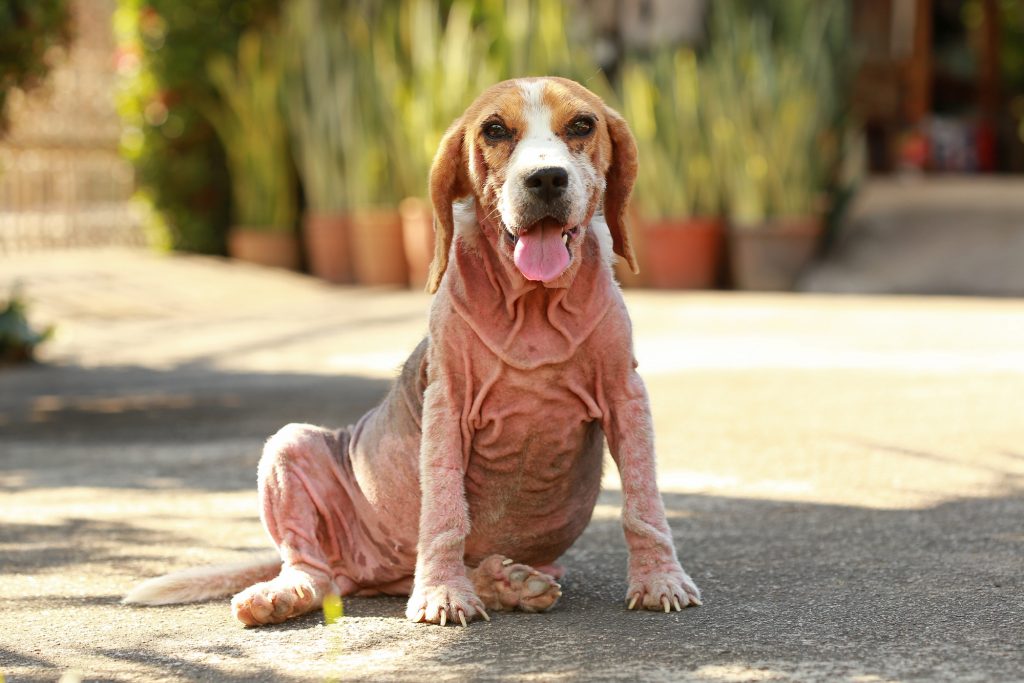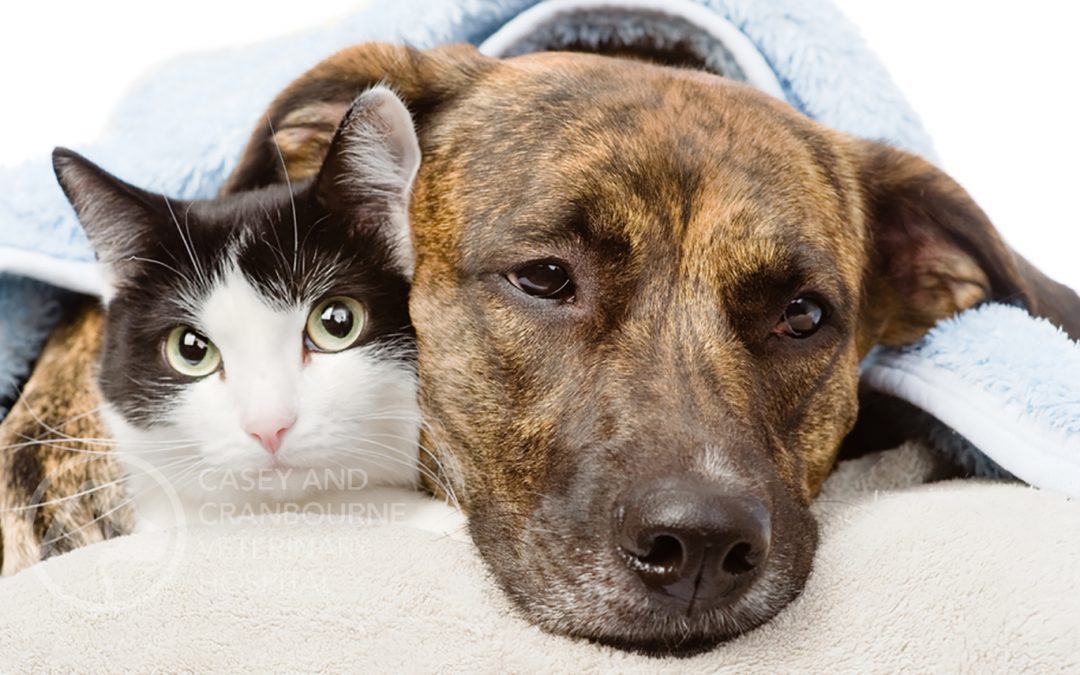Demodicosis, or follicular mange, also called demodectic mange, is a skin disease that affects both dogs and cats. It is manifested by loss of hair on certain parts of the body, redness, or a change in the color of the skin, sometimes oozing. Depending on its form, dog demodicosis is benign for healthy dogs. However, if it evolves or affects an older puppy or dog, it can be accompanied by complications.
Dog demodicosis: what is it?
Dog demodicosis is a relatively common parasitic disease in dogs, but also in cats and even in humans. It is due to the presence of a mite: Demodex. However, although it is caused by the parasite Demodex, it should be noted that it is not the same type of Demodex that affects dogs, cats, or humans.
In the case of the dog, it is Demodex canis and Demodex injaï. The Demodex settles in the hair follicles where it feeds on sebum and dander and reproduces the surface of the skin. The Demodex requires two weeks to change from larval to the adult stage.
Demodicosis designates a too important presence of Demodex. Although about 85% of dogs carry Demodex, few of them show clinical signs.
Puppies are particularly affected by demodicosis because their immune systems are not yet strong enough. Indeed, the mother, a carrier of Demodex, can transmit the virus to the puppy from the first days of its life during breastfeeding. Usually, the disease occurs between the ages of three and twelve months.
Reading suggestions: Black Dog Names – 400+ Names for Black Dogs
Older dogs can also be affected due to a weakened immune system.
Finally, some dog breeds have a predisposition to demodicosis. This is for example the case of the Beagle, the German Shepherd, the Boxer, the Weimaraner, the Chow-Chow, the Collie, the Dalmatian, the Great Dane, the Scottish Terrier, and the Westie.
Demodicosis: symptoms
Demodicosis is expressed by a variety of symptoms. In general, there are dermatological lesions, the dog loses its hair in demarcated or extensive areas. In addition, it is possible to observe dandruff (dander) or seborrhea (abnormal increase in sebum production), which can explain a bad smell on your dog’s skin.
In general, a distinction is made between two types of demodicosis: localized demodicosis and generalized demodicosis.
We speak of localized demodicosis when less than five alopecic lesions (having suffered hair loss) are present on the whole body. The dog does not suffer from itching or superinfection. In general, young dogs (before the age of three) and puppies are the most prone to localized demodicosis.
Generalized demodicosis is present if at least five separate areas are affected (or more than two legs in the case of pododermatitis). Usually, it is an extension of localized demodicosis.
In the presence of generalized demodicosis, the lesions spread and may start to ooze, the dog is itchy and there is a presence of scabs. This is called pyoderma, which can develop into deep pyoderma, which is a bacterial superinfection of the skin and which is due, among other things, to a staphylococcal infection.
In cases of chronic generalized demodicosis, the dog’s skin may take on a gray-blue tint.
Reading suggestions: Diarrhea In Dogs, How To Approach It With Discernment
We must always make the connection between generalized demodicosis and dysfunction of the dog’s immune system: it can be a disease, genetic or not, or a medical treatment, in particular immunosuppressive treatments.
This form of demodicosis can affect young dogs as well as adult dogs and is a severe form of demodicosis that requires consultation with a veterinarian.
Dog demodicosis: is it contagious?
The Demodex is a mite that lives in the sebaceous glands and hair follicles of the dog, where it feeds on sebum. This explains why demodicosis is also called follicular mange. This mite has a peculiarity: its hope of survival outside its natural environment is only a few hours. To be able to ensure its development, it must be in the hair follicle of the dog.
This explains why transmission by direct contact between adult dogs is extremely rare. In this case, we are in the presence of a dog whose immune system is extremely weak, whether because of his age or because of an illness.
In the case of puppies, transmission occurs exclusively through the mother who is the carrier, during the nursing period.
Canine demodicosis is therefore not a contagious disease between adult dogs. Furthermore, humans, cats, and dogs are not confronted with the same species of Demodex, and contagion from dog to human or from dog to a cat is thus excluded.
Demodicosis: treatment
Localized demodicosis does not lead to systematic treatment. Indeed, the chances of spontaneous recovery are quite high. However, you should not neglect your visit to the veterinarian, because only he will be able to decide on the best approach to take.
Generalized demodicosis, on the other hand, is a serious disease and treatment must be started. Indeed, the origin of this being often a weakening of the immune system, there is little chance that the dog’s organism can defend itself against demoed
Demodicosis is a non-contagious dog skin disease that particularly affects puppies and young dogs, but rarely adult dogs (except in the presence of immunodeficiency in the case of an older dog). Demodicosis should be treated as quickly as possible. Indeed, if the disease in its localized form evolves in a generalized form, in particular in the presence of bacterial superinfection, it can have important consequences on the health of your dog. Consult your veterinarian even in case of doubt, he will be able to make a diagnosis and direct you to the most suitable treatment.









